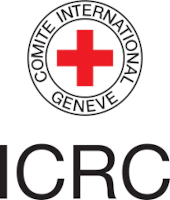Transition to Renewable Energies Through Mini-grids
Overview
Providing Access to Clean, Reliable and Affordable Power to the Poor in Bihar (India) Through Solar Microgrid Networks
Abstract
Bihar is 3rd largest state in terms of population of the 27 states in India, having 9% of population, and in terms of area it is the 12th largest and has less than 3% of the total national area. Per capita energy consumption is 95 units, which is 8 times less than the national average. The reasons for this are attributed to Insufficient supply and high transmission & distribution losses (51%). Bihar clearly is the state with the highest population density, wherein most of the other states have no access to electricity which causes a huge demand-supply gap. These factors among others have led to strong market opportunitys for off-grid energy solutions. The government in Bihar has made some changes in its laws which have led to the emergence of enterprises in various sectors as well as the improvement of infrastructure.
Objectives
To create a sustainable solar microgrid project in order to adress the electricity shortage problems that Bihar is facing.
Approach
To begin the installation, a room is constructed where solar panels of 5.5kW are set up to generate power during the day and store it in the energy bank. At night this energy is converted from direct current (DC) to alternating current (AC) using a solar power conditioning unit (PCU) and is then transmitted to various clusters of 10 houses each. Each cluster has a distribution box which supplies power to 10 households (HHs) separately. In order to limit the supply, a load checker is kept for HHs to keep a cap on maximim alloted usage. Due to problems with theft of the components, the transimission system was subsequently built underground.
Lessons Learned
After careful obsevartion of the operations in the first plant, some issues identified and resolved were:
Abuse of system
Reduced by contructing underground transmission and load checkers
- Equipment and hardware were secured by storing them in locked cabinets and rooms
System Maintenance
- Train people locally to do the basic maintenance
- Regular visits by technical supervisors
Monitoring
- Incentivizing local NGOs versus remote monitoring
Regular Payment collection
- Currently being addressed by incentivizing operators
- Prepaid meters (for buying credits by making advanced payment) were not installed because of weather issues leading to insufficient charge in batteries
- A Diesel Generator Hybrid system with a battery management system (BMS) is to be introduced
Interconnected Mini-grids for Rural Energy Transition - A Case Study of Nepal
Abstract
More than 2 billion people worldwide have no access to electricity, with 99 % of these people residing in developing countries. About 80% of them live in rural areas. In Nepal 56% of the population has access to electricity (49% in the rural areas), but with up to 16 hours of load-shedding in the national grid. This study has been done to show whether the use of individual renewable energy technologies have socio-economic benefits.
Objectives
To show the socio-economic benefits that individual renewable energy technologies have in Nepal.
Approach
The approach that has been considered is the Next Generation of Renewable Based Mini-Grids. This approach has many advantages inculding:
- Grid stabilization
- Reliable energy supply
- Avoids end-user maintenance
- Periodic maintenance
- Simple integration of different energy sources (PV, wind, hydro, etc.)
- Least-cost option
- Increasing quality of energy services
- Supports local infrastructure and economic development
- Alternative solution to the national electricity grid
Geographic Analysis of isolated diesel mini-grids for the implementation of renewable energies – A case study of Tanzania
Abstract
Tanzania is an African country with around 47 million populations live in a country area of around 950,000 km2. The installed capacity of electricity power generation is more than 950MW, where 60.5% of it is renewable energies (mainly hydropower). There are many mini-grid diesel generator,, which have high power generation costs due to diesel fuel price, transport costs and low efficiency. At the same time, these generators cause CO2-emissions, air pollutants. So idea to upgrade of former diesel mini-grids with renewable energies has appeared.
Objectives
The main goal is to show the effects of using diesel mini-grids with renewable energies.
Approach
The main idea was to upgrade of former diesel mini-grids with renewable energies, this upgrade has many advantages such as:
- lower power generation costs
- lower fuel dependency
- fewer CO2-emissions, fewer detrimental environmental effects
- existing diesel generators serve as back-up power sources
Different methods are used in the localization of diesel main-grids and deciding whether the power plant operates off-grid or on-grid such as:
- Use the global spatial information
- Use the information on power plant inventory and locations from world power plant database.
- Spatial extension of transmission grid
- Extraction of 25 km buffer zone
Results
- State-owned village mini-grids have to be targeted for a broader implementation of renewable energies in decentralized power generation
- Problem: Tariff structure
· loss of 0.42 USD per generated kWh in diesel mini-grids
· av. deficit of 85 Million USD between 2003 - 2009
· Subsidies necessary for enabling electricity access, but investments in RE cannot be covered with low tariffs
Recommendations
- Necessary to break the negative feed-back-loop
- Fuel imports – Debt – Lack of capital – Fuel imports
- External funding necessary for upgrading with RE
- Improved and more reliable power supply through hybrid mini-grids can increase electricity access (National target: 30 % of population in 2015)
Further research
- Community-operated diesel mini-grids, individually operated diesel generators



















